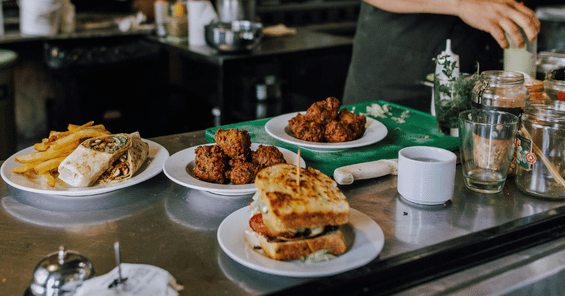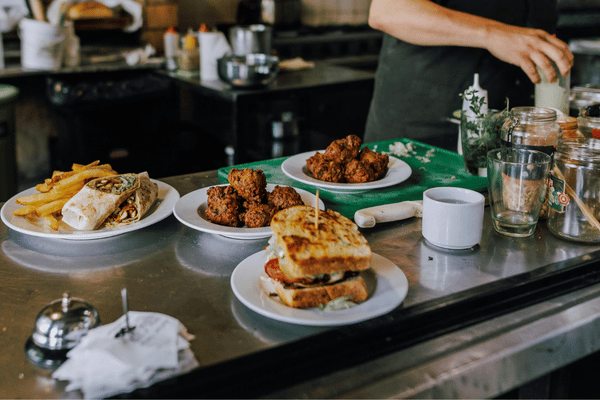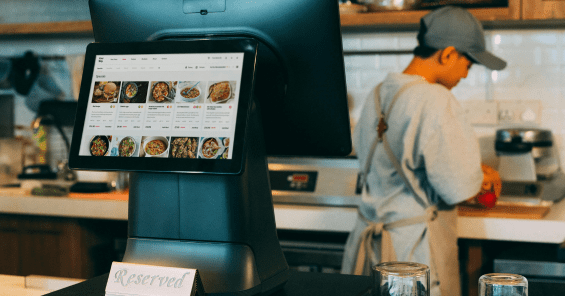

How Restaurants Can Eliminate Unnecessary Food Waste Once And For All
Discover how your restaurant can significantly reduce its environmental footprint while boosting profitability. This comprehensive guide offers actionable steps to minimize food waste, streamline inventory, and even turn your waste into resources—aligning your business with sustainability and saving you money.
“Waste not, want not. The less we waste, the less we lack in the future,” is more relevant today than it was when it was first coined over 200 years ago. Around the globe, sustainability is top-of-mind for every restaurant owner or manager - and with good reason. According to Rethink Food Waste Through Economics and Data (ReFED), restaurants account for 11.4 million tons of food waste on an annual basis. Not only is this an unthinkable amount of wasted food, but the cost associated with food loss amounts to more than $25 billion each year. By implementing the Environmental Protection Agency’s (EPA) Food Recovery Program Hierarchy (Prevent, Recover, Recycle) your restaurant can soon be in the green.
Five Profit-Impacting Trends Shaping the Restaurant Industry in 2023
🔓 Unlock the secrets to restaurant success with actionable strategies for optimizing operations, maximizing profits, and building a loyal customer base.

An ounce of prevention goes a long way
The most obvious way to reduce waste is to create less of it. But, where do you begin? Do you know how much food waste your restaurant is producing and its associated costs? If not, it may be time for a waste analysis. Once you know which food items are generating the most waste, you’ll be in a better position to put preventative measures in place.
Let’s take a look at some of the most common reasons for food waste, and simple steps to curb it. Your multi-page menu is full of mouth-watering dishes that are culinary favorites among your patrons. But at what cost to you and the environment? While we’re not suggesting that you remove menu favorites, maximizing the ingredients that go into your dishes will help reduce waste, as well as improve your profitability. For example, your pot roast dinner is Tuesday’s speciality.
What happens to the roast that went unconsumed? Why not make Wednesday’s special beef tip shepherd’s pie? This will not only help minimize the amount of beef that otherwise may have ended up in the trash, but could result in a new customer favorite. And don’t forget, the vegetables that go into the shepherd’s pie don’t need to be picture perfect. Buy ugly produce, e.g. carrots, potatoes, onions to further boost this menu item’s mark-up.
Avoid Unnecessary Food Waste By Going Over Inventory
Do you know at any given time how much inventory you have on hand, or alternatively what you’re about to run out of? A strictly adhered to inventory counting process will ensure that your oldest stock is used first, reducing or even eliminating the need to toss spoiled or ‘after use’ foods. Whether you do counting daily, bi-weekly, weekly or monthly you need to ensure accurate figures, and the only way to do this efficiently is with a restaurant inventory management solution.
Let’s switch gears and talk about portion sizes. You may be known for large plates filled with heaping portions. But how much of these generous sized meals ends up in the trash? Sure, smaller plates are an option, but at what cost to your restaurant’s profitability? Instead of purchasing new plates, you can modify your menu to offer multiple serving sizes with refill options. To fill the plate, use low cost garnishings such as spiralled carrots or sprigs of parsley.
You can also make sure that your kitchen is always putting the correct amount food on the plates. And no, this doesn’t mean weighing each dish as it leaves the kitchen. If certain dishes are returned with a sizable portion of food still on the plate, it’s time to cut back on the serving size. Not only will you reduce waste, but you’ll cut your annual food cost.
Put recovery into play
You may not be able to completely eliminate food waste, but you can put the food that you are no longer able use to good use. Shelters and food banks are always in need of edible foods. Look into your local charitable organizations and develop a partnership to get the ball rolling. Once you form a partnership, be sure your back-of-house operation understands the processes for a smooth food transition.
What if you have expired food that is no longer fit for human consumption? You can still put this food to good use and cut down on your environmental impact, not to mention disposal fees. Think farms… Our farmers need a helping hand and you can give it to them. While we don’t want to feed livestock food that will make them ill, a lot of what you would typically trash can go a long way. Veggies that have become a bit mushy and fruits such as strawberry tops and bananas will keep our farmers, not to mention their animals grinning from ear-to-ear.
Recycle more, waste less
Did you know that the per pound cost to recycle is half as much as typical trash removal? Many cities are making composting a requirement. Fruits, veggies, coffee grounds, paper products and other items can be composted, helping you to create a greener environment, while lowering your hauling and disposal fees.
Do you still have unwanted waste? This is where you need to think outside the box. The food that you typically would trash can become nutrients for local gardens. Maybe you can even take it to the next level and have a rooftop or patio garden of your own! The nutrients in non consumable foods can become the bedrock for your very own vegetable or fruit garden. And you know what that means, you may be able to eventually reduce your reliance on produce distributors - saving you money and keeping your restaurant green.
Simple measures, huge results
Don’t expect your restaurant to become waste-free overnight, but with diligence you will see a marked reduction in trash, lower costs and ultimately higher profitability. By implementing these eco-friendly suggestions, you’ll be on your way to a greener and more sustainable establishment.

Automate your inventory management, control food costs, and streamline back-of-house processes effortlessly with MarketMan's restaurant software. MarketMan enables restaurateurs to eliminate manual tasks, reduce waste, and drive success through strategic insights. Experience a new level of restaurant efficiency. Schedule a demo now to learn how MarketMan can revolutionize your operations!
Author
Contributors
If you have any questions or need help, feel free to reach out
Don't miss out on maximizing your restaurant's profits! Calculate your ROI with MarketMan
Join over 18,000 restaurants and get the hottest restaurant tips delivered to your inbox
You may also be interested in
Ready to get started?
Talk to a restaurant expert today and learn how MarketMan can help your business






